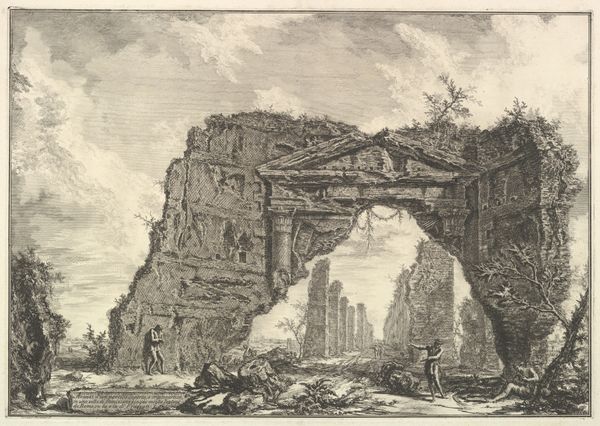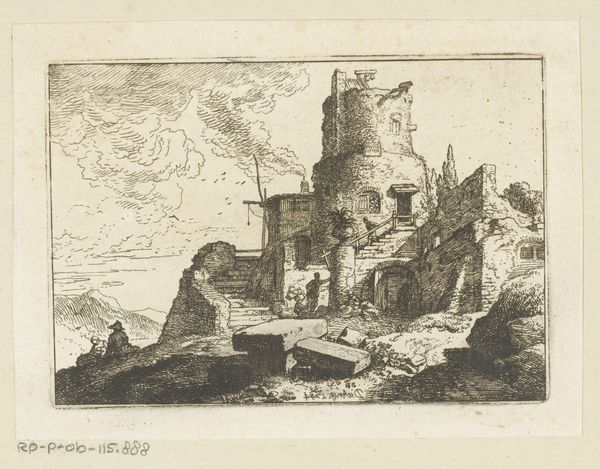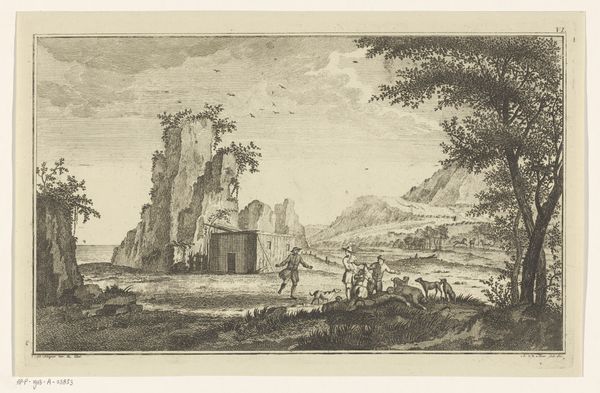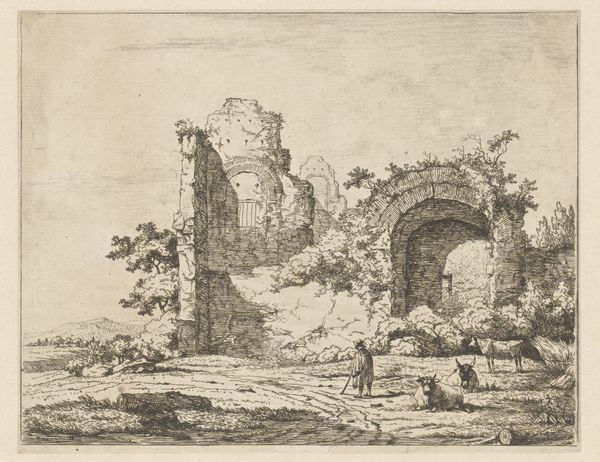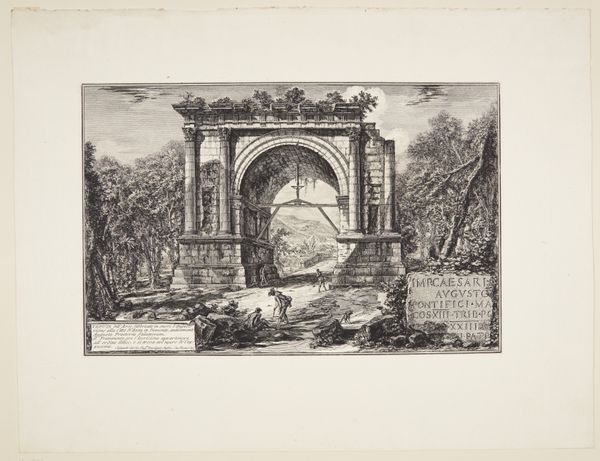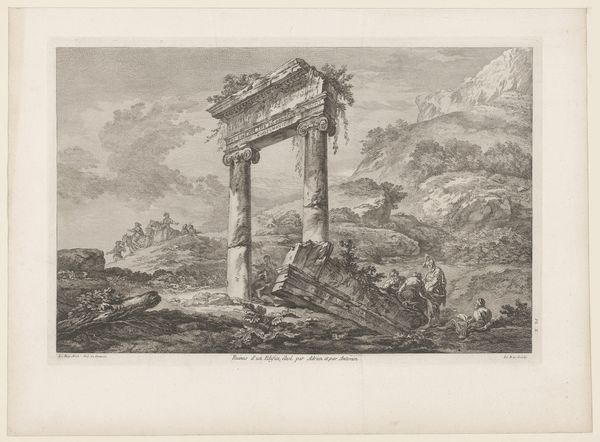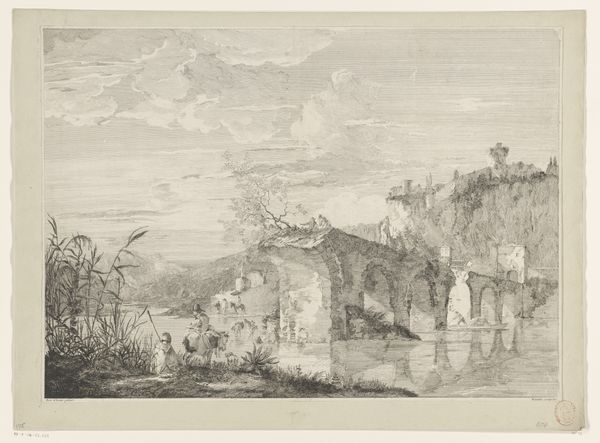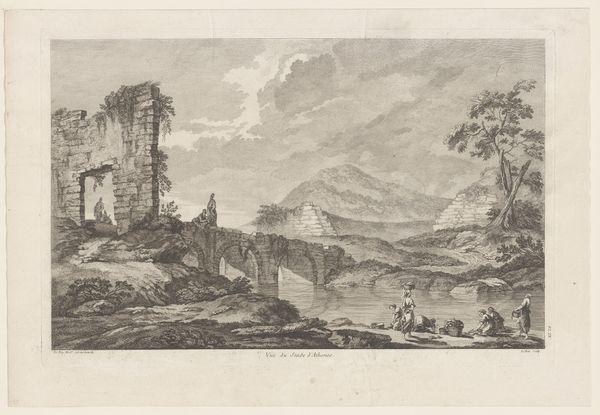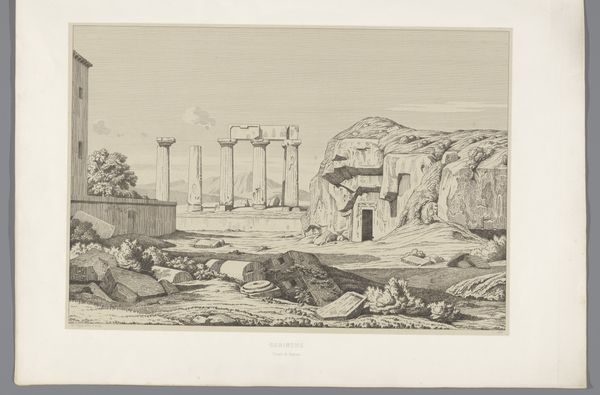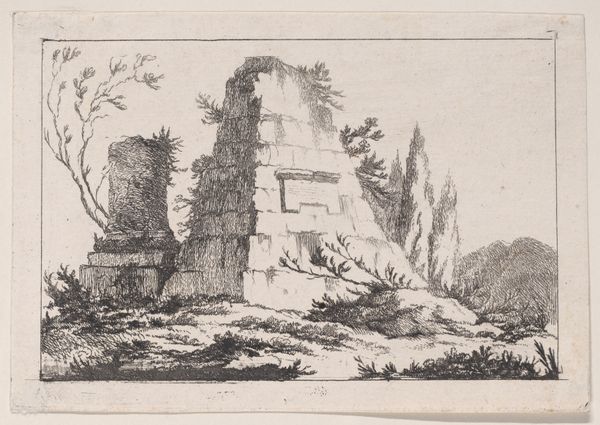
View of the Remains of a covered portico to part of the Villa called the 'Sette Bassi' on the Road to Frascati 1766
0:00
0:00
print, engraving, architecture
# print
#
landscape
#
romanesque
#
engraving
#
architecture
Dimensions: 425 mm (height) x 609 mm (width) (plademaal)
Editor: This is Giovanni Battista Piranesi’s "View of the Remains of a covered portico to part of the Villa called the 'Sette Bassi' on the Road to Frascati", an engraving from 1766. I am struck by the romanticism of the decaying architecture. What kind of historical context can you provide to better understand the image? Curator: Well, Piranesi was deeply invested in representing Roman antiquity, but through a lens shaped by his own time. It’s interesting to consider how he wasn't just documenting ruins, but participating in the construction of a particular vision of Rome, wasn’t he? How does this image engage with ideas about the relationship between the present and the past? Editor: It does seem to suggest a cyclical view of civilization - rising and falling, leaving monumental remains. The architecture overwhelms the figures that we see. Curator: Exactly! These images weren't just aesthetic exercises; they played a role in shaping how people perceived Rome and its legacy. He carefully uses scale to underscore human insignificance, no? Consider also how the print medium allows these ideas to be widely disseminated and become part of the cultural imagination. Do you feel that impacts its overall influence on art history? Editor: It certainly speaks to accessibility and influence, especially before photography! Thinking about the image in that light makes it a commentary on cultural memory, not just a landscape. It also touches on the public perception of ruins, which can then be easily shared through this type of medium. Curator: Precisely. By understanding its role in circulating ideas and influencing perceptions of Roman history, we appreciate Piranesi's print not just as a picture, but as an agent in the ongoing process of constructing historical narratives and thinking about Rome in a particular manner. Editor: I now see it as more than just a landscape print; it's a politically charged commentary on the perception of history, Roman legacy and societal structure, accessible to the masses. That makes me want to investigate further!
Comments
No comments
Be the first to comment and join the conversation on the ultimate creative platform.
